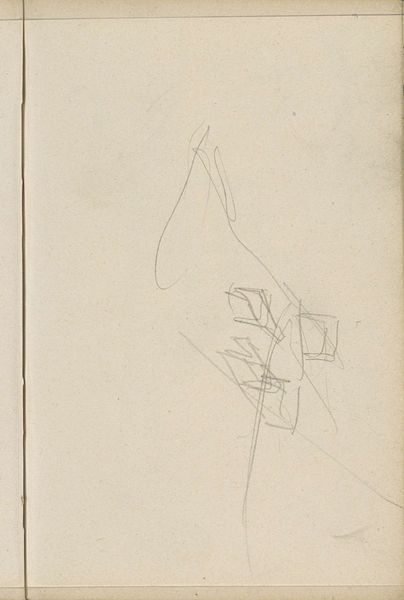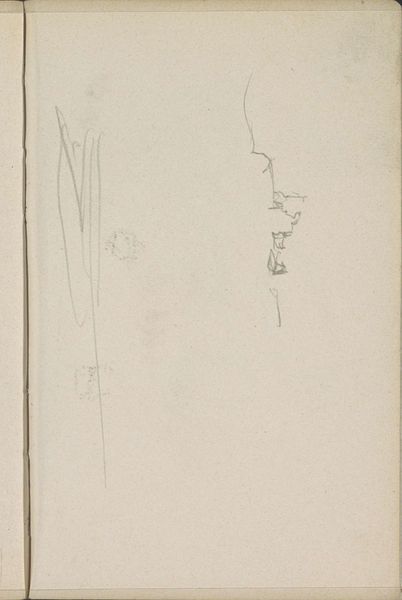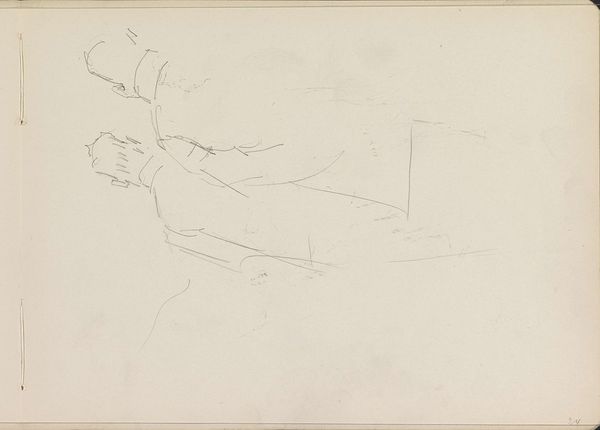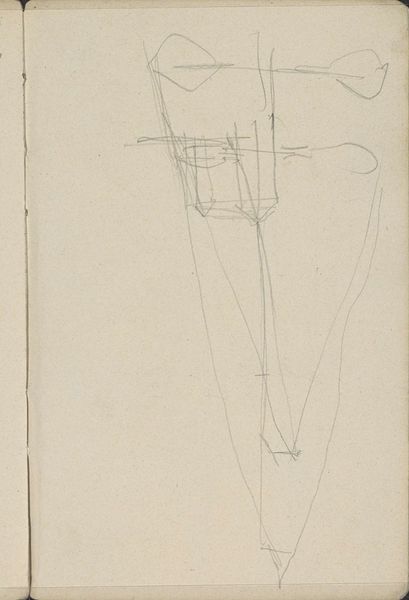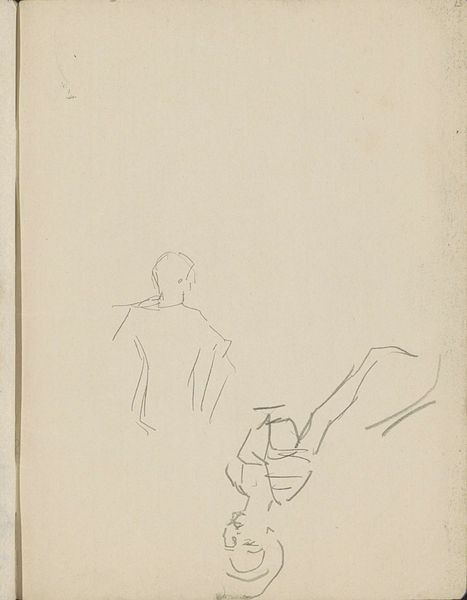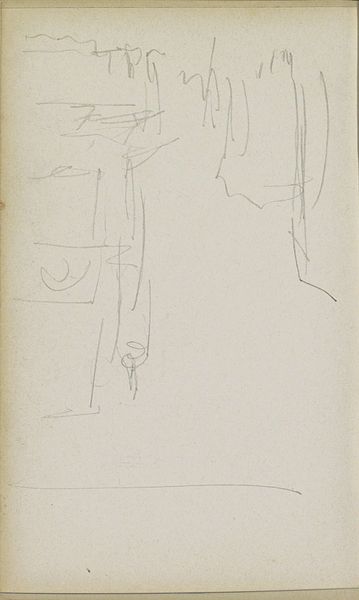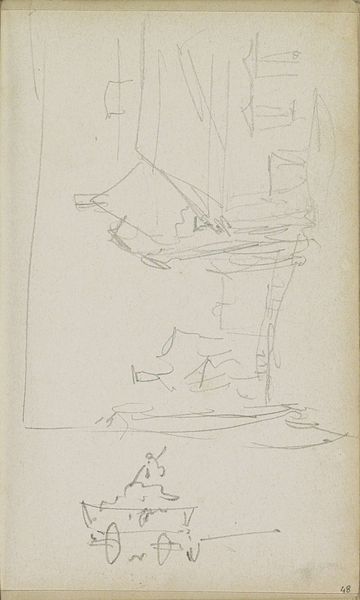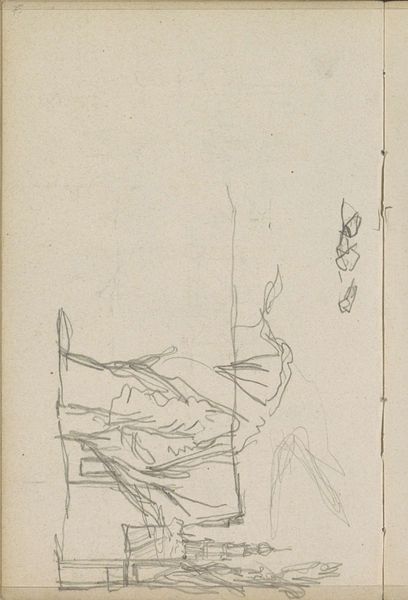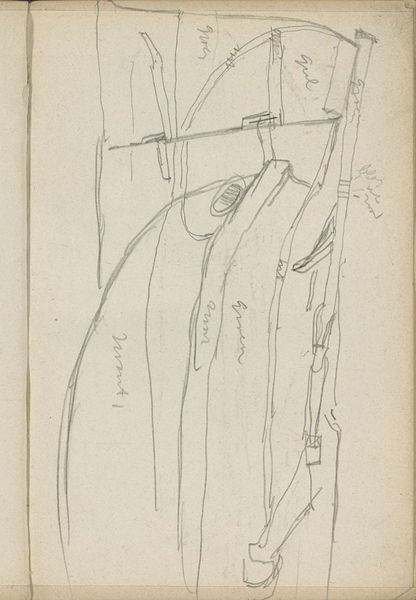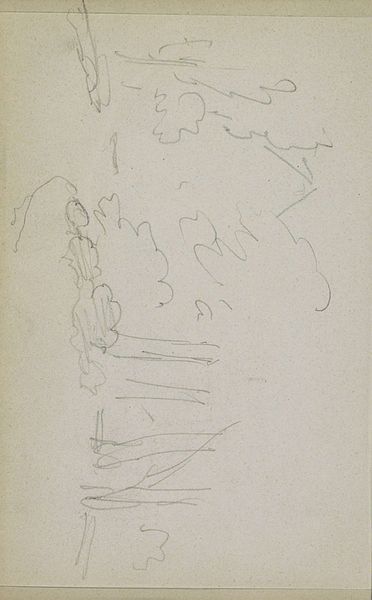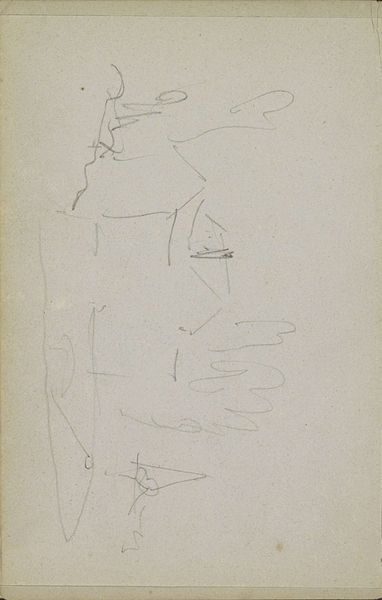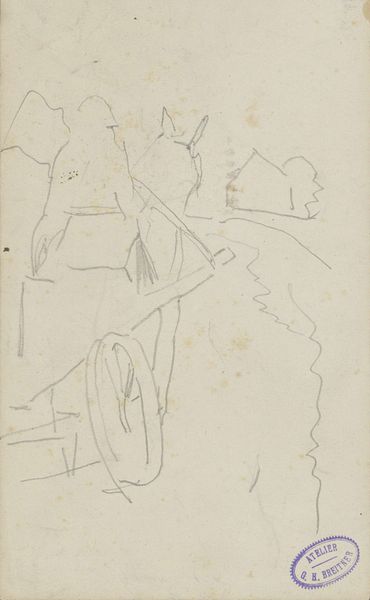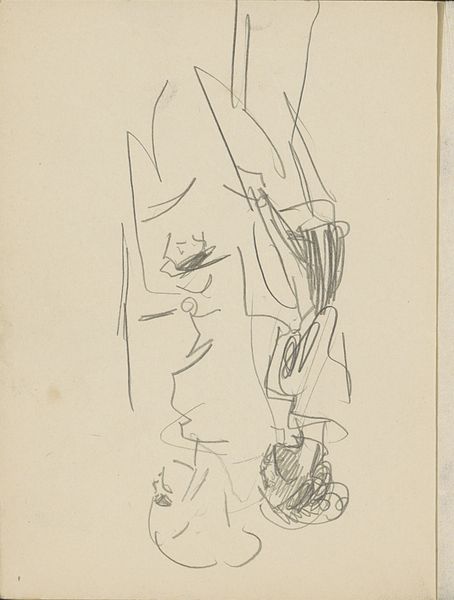
Copyright: Rijks Museum: Open Domain
Editor: So, this is "Staande vrouw" which roughly translates to "Standing Woman", by George Hendrik Breitner, sometime between 1886 and 1903. It’s a pencil drawing on paper. It feels like a quick sketch, almost unfinished, but there's something captivating about its simplicity. What do you see in this piece? Curator: What I observe foremost is the starkness of line and form. The artist, Breitner, seems less concerned with mimetic representation, and more with the articulation of space and volume through minimal means. Note the economical use of line; it suggests mass and shadow, without resorting to detail. Editor: Right, it's not trying to be photorealistic or anything. It's very bare bones. Is the lack of detail a comment in itself? Curator: Perhaps. We might consider the work's ontological status – is it a fragment, a study, or a completed work in its own right? The formal elements—the lightness of the pencil work, the composition's placement on the page—contribute to an overall sense of transience, an ephemerality which is conceptually engaging. Editor: So, the incompleteness IS the point. I suppose that transforms the whole viewing experience. Curator: Precisely. Focus on how Breitner uses line weight. Where are the heavier strokes? How do these contribute to your reading of the figure's stance? Ask yourself how the negative space functions. Does it isolate or integrate the figure? Editor: The heavier lines do seem to ground her, defining her torso mostly, and the negative space isolates her... it’s not a comfortable isolation. It’s very stark when viewed that way. Thank you! Curator: Indeed. By examining these formal relations, we unlock avenues of understanding beyond mere subject matter.
Comments
No comments
Be the first to comment and join the conversation on the ultimate creative platform.
